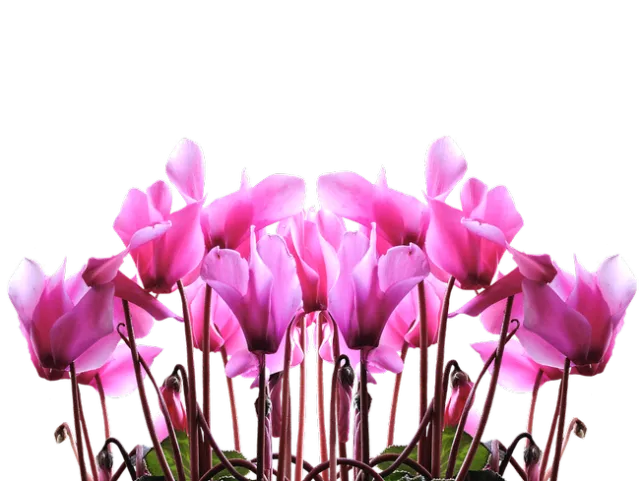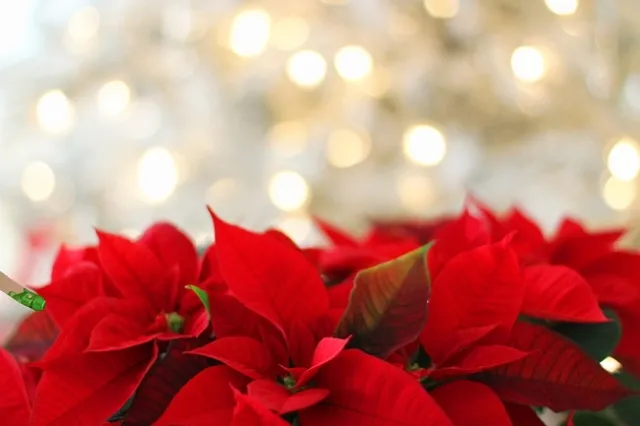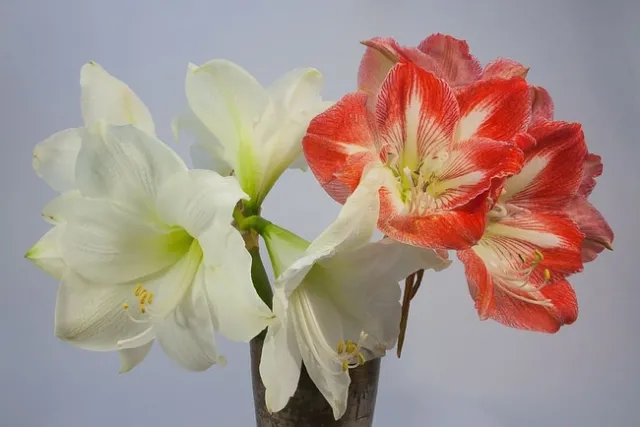When you think of traditional plants that represent the Christmas season, the poinsettia automatically comes to mind. Other plants also can be used indoors to provide seasonal color, including the cyclamen. With its striking red and white flowers, the cyclamen makes quite an impact, especially when placed around taller poinsettias. In order to look its best during this season, the cyclamen must be given proper care.

You should place cyclamen in a cool, well-lighted area, but not in direct sunlight. An ideal exposure is an east window where the plant does not touch the glass, and where temperatures are 50 degrees F at night and 60 to 65 degrees F during the day. Cyclamen requires moist soil and good drainage. When watering, use lukewarm water, taking care to keep the water off the foliage and crown of the plant. Don't allow the plant to stand in water for very long, as the roots may rot. You can keep the plant from standing in water by placing gravel or broken pieces of pottery in the tray beneath the pot. The plant should be watered so that the soil is not washed from around the corm (bulb-like structure) and roots.
In the late winter and early spring the older flowers will fade and new flower buds will continue to open, until about the first part of February. At this time, the leaves may start to turn brown, no more flowers will appear, and the plant will seem to deteriorate. If you want to carry the plant over to another season, you'll need to give it a rest period. Do this by reducing the amount and frequency of watering, and by placing the plant in a cool area (40-50 degree F.) until warm, spring weather arrives. At this time you can replant the corm in a well-drained soil mix.

After danger of frost is over, place the cyclamen in a cool, protected location outdoors. Give the plant adequate water and fertilize it about once a month, or less, with a water-soluble fertilizer. During the brightest days of summer, select a location that provides partial shade for the plant to grow. Take the plant indoors before frost in the fall.
During late fall and throughout the winter, place the plant in full sun (east exposure), with temperatures no higher than 65 degrees F. If everything goes right, your cyclamen should be blooming between mid-November and early December.

Other plants appearing during the holidays include the amaryllis, azalea, African violet, Christmas pepper, chrysanthemum, Christmas cactus, kalanchoe, and paperwhite narcissus, all of which flourish beautifully as houseplants. Proper care varies with species, but there are some general recommendations to follow when caring for these plants. Most species do best in a location where as much natural light as possible is available, such as a sunny window. Optimal temperatures include a daytime temperature of 65 to 75 degrees F, and temperatures around 50 to 55 degrees F during the night. An exception is paperwhite narcissus, which holds up better at 60 to 65 degrees F during the daytime, and 50 degrees F at night. African violets and poinsettias prefer even warmer nighttime temperatures, around 60 degrees F.
Because most homes are extremely dry compared to the greenhouse environment where they were grown, it's a good idea to place the plants in groups or on trays with water. To help prolong the flowering period, you can even place the plants in rooms with higher humidity, such as the kitchen. Usually, however, the plants should be kept in a cooler room, away from warm air currents. Check your plants daily and watered them as needed. Apply enough water each time so that some will drain out the bottom, but be careful not to let the plants stand in water for very long.

Ed Perry is the emeritus Environmental Horticultural Advisor for University of California Cooperative Extension (UCCE) in Stanislaus County where he worked for over 30 years.

